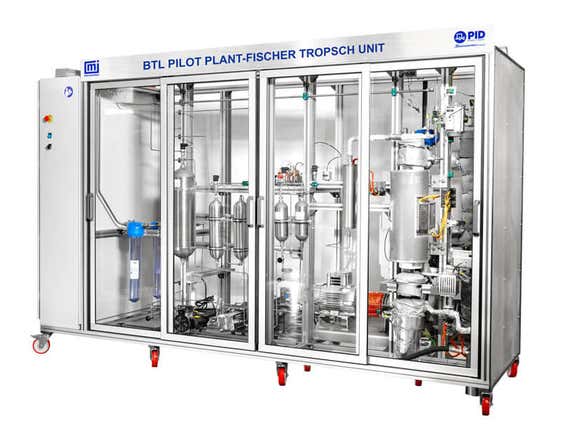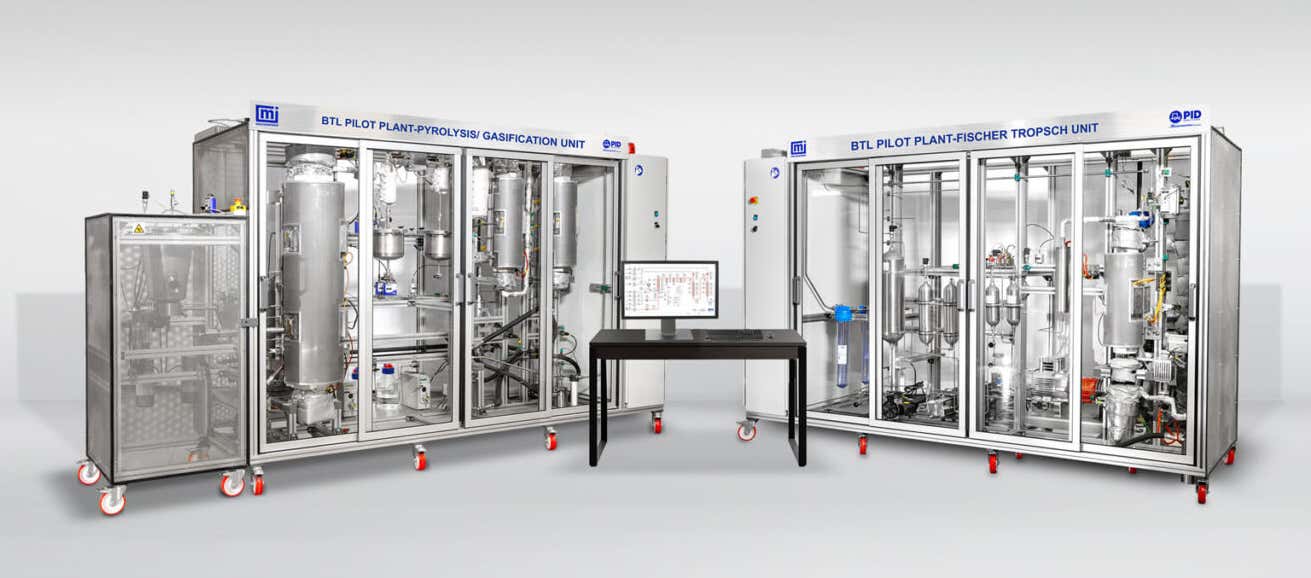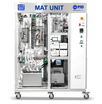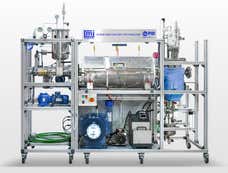Overview
Improving competitiveness in the industry is sharply marked by developing new products with high-quality features and a high added value. Continuous and automatic pilot plant that can simulate industrial processes at the laboratory level with reasonable scalability are essential for seeking new products, improving the quality of existing ones, and developing new processes.
These systems' high degree of complexity, their high number of operating variables and the interrelationship among them require an exhaustive study of the instrumentation and control to attain representative and reproducible results.
PID became part of Micromeritics in 2018, integrating its patented technologies, including Pilot Plant, into the portfolio. In 2025, Micromeritics and PID joined Malvern Panalytical, bringing these exceptional instruments into the groups' materials characterization solutions.
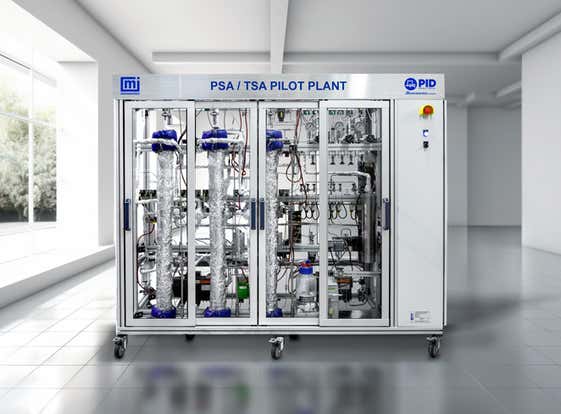
Gasification and pyrolysis
Due to the renewed interest in innovative ways to convert the existing fuel reserves with improved technologies such as gasification and pyrolysis, PID Eng&Tech has worked in collaboration with important researchers in the field of biofuels in order to develop the most versatile pilot plant existing in the market. Its versatility and complete automation allow the determination of the optimal experimental conditions and detection of possible operational problems in industrial gasification or pyrolysis reactors.
You can choose processing of up to 2 kg/h of solid for gasification and pyrolysis processes, or smaller-scale processing of up to 200 g/h.

Continuous and non-fluctuating system for feeding solids such as biomass, plastics, etc, in a constant and reproducible manner.
The reactor is divided into the reactor zone and the freeboard zone. Homogeneous operating temperature up to 650 – 850 °C for pyrolysis and gasification, respectively. Radiant furnace (up to 1000 °C) with three heating zones to improve temperature profile. Provision for fluidization velocity determination.
High precision pump (up to 25 ml/min) for liquid feeding. Heat-traced lines or cooling provision, depending on the properties of the liquid.
μGC is integrated into the plant, allowing online gas sample analysis and mass balance calculations.
For the combustion of remaining contaminants of the product gas stream.
Gaseous streams (air, O2, steam, N2) are preheated up to 400 °C. A complete facility for steam generation is included.
A system of SS316 shell-tube exchanger, several vessels, and coalescence filters allows cooling of the hot gases and a way to obtain tar and bio-oil efficiently. Under request, temperature-controlled implementation to obtain fractionated bio-oil.
Modular sampling train based on cool traps where the tar (high molecular weight organic compounds) is collected with the help of solvents.
For retention of contaminants before venting the product gas stream.
Outlet gas stream can be fed again into the pilot plant at atmospheric pressure through a thermal mass flow controller, or it can be compressed to be fed into other equipment.
Two heated cyclones are connected in series, and a high-temperature filter is used to remove solid particles from the gas stream, reducing ash content in the final product.
Recommended for pyrolysis, the electrostatic precipitator has been designed for fogging oil separation. It enables the collection of liquid particles that cannot be obtained by condensation.
Solid refill without affecting the operating pressure of the plant to increase the experiment time.
For measurement of the gas quantity that has been produced. It includes temperature and pressure correction.
Slow pyrolysis
The screw reactor unit allows for obtaining add-value solid from waste utilizing a slow pyrolysis process. It can treat different types of feedstock under a wide range of temperature conditions.
The unit comprises a SS310 screw driven horizontal tubular reactor housed in a multi-zone furnace, which allows operation with temperature ramps throughout all reactor length. The residence time in the reactor can be fixed from a few minutes up to hours.
Thanks to an independent dosing screw system, the feed rate can be modified independently from the residence time. At the reactor outlet, the solid product is collected in a vessel, whereas the obtained gas leaves the vessel through the top, where a filtering element is fixed to prevent fine particles from being withdrawn.
Finally, the vapors are condensed to obtain liquid, and the gas product is measured in a wet gas meter. A vacuum pump is used to avoid plugs in the reactor and keep the pressure in the system constant.
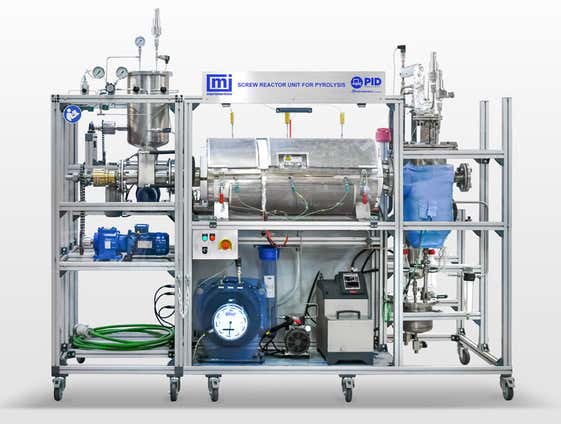
Microactivity test unit
The Microactivity Test Unit (MAT) is a fully automatic, controlled, and computerized laboratory reactor for the analysis of Fluid Catalytic Cracking (FCC), using as feedstock petroleum oils or renewable sources such as bio-oil.
Key features
- Allows studying the catalyst activity and selectivity based on the ASTM D3907 method
- Performs continuous and automatic control of up to four independent, programmed, and consecutive FCC tests
Versatile operation modes
- Fixed and normalized conditions based on the ASTM D3907
- Quasi-zero dead volume using a perfectly engineered reactor size, precise pipe lengths, and distances
- The standard unit can be adapted to meet specific requirements with extra equipment (e.g., mass flow controllers, simultaneous dosing pumps, special materials of construction)
- Conditions determined by the operator for each independent run and each independent step during the experiment
- Catalyst/oil ratio as flow rate
- Injection flow rate Injection time
- Temperatures
With excellent reaction temperature control and making use of a precise syringe pump for gasoil feeding, even for a very short reaction time, this unit carries out reaction and regeneration in situ and consecutive stages, including coke quantification.
The four liquid products obtained are collected in a cooled receiver until the end of the experiments, while gases can be analyzed online in a gas chromatograph.
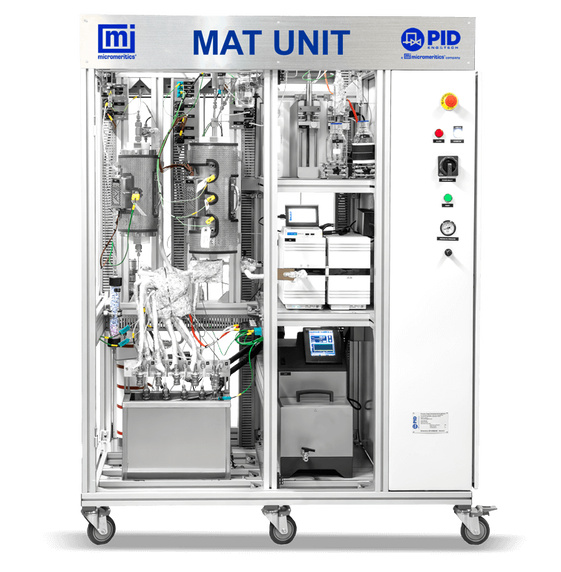
Stirred tank pilot plant
This computerized and automatic pilot plant is based on a stirred tank reactor for operation in continuous, batch or semi-batch mode. The plant is high-pressure certified according to current regulations, and customers can design their own pilot plant by using as many options as required.
- The number of gases and liquids can be fully customized
- A stirred tank reactor (made of SS316, Hastelloy C, glass, PTFE lined) with a magnetic coupling agitator for high-pressure applications
- Volume of reactor from a few ml up to several liters
- Different types of catalytic baskets are available
- Temperature control system for the reactor is via an electrical furnace or fluid through a heat jacketed reactor; a cooling coil is also available
- Pressure control system for the reactor is based on the patented PID Eng&Tech microregulation servo-controlled valve
- If fractionation is needed, two different pressure controllers can be selected for the reactor and separators
- Liquid-gas separator at high pressure is based on the patented PID Eng&Tech with very low dead volume according to specific process conditions
- Parallel reactors are also available to increase throughput
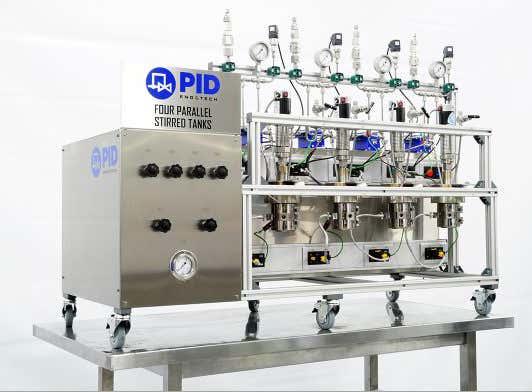
Photocatalytic reactor unit
Computed and completely automated unit based on a photocatalytic reactor with one/two sight ports, with capability to work at high pressure and temperature.
- The number of gases and liquids is fully customized
- A steam generator facility is available
- Photocatalytic reactor with different materials and designed for different amounts/sizes of catalyst
- Different light systems are available according to wavelength and power supply requirements
- Liquid-gas separator at high pressure is based on the patented PID Eng&Tech with very low dead volume according to specific process conditions
- Pressure control system for the reactor is based on the patented PID Eng&Tech microregulation servo-controlled valve
- A vacuum system is available
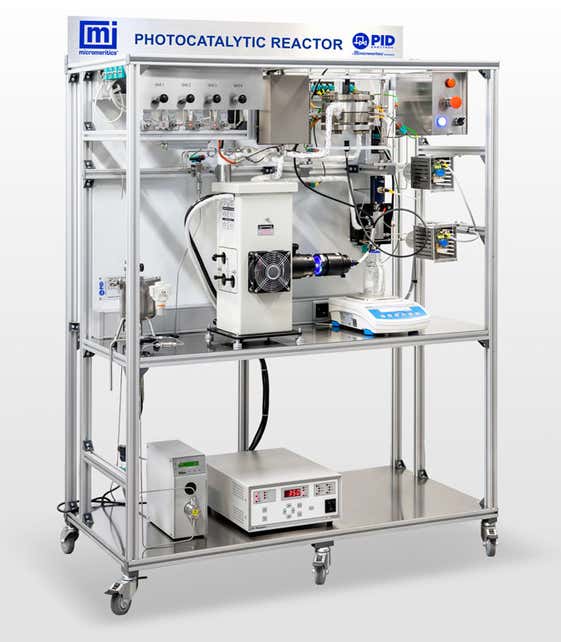
Custom made
Our engineering team specializes in the design and construction of a customized Pilot Plant.
Our primary goal is customer satisfaction, which we achieve by collaborating closely with our clients to transform process ideas into R&D equipment.
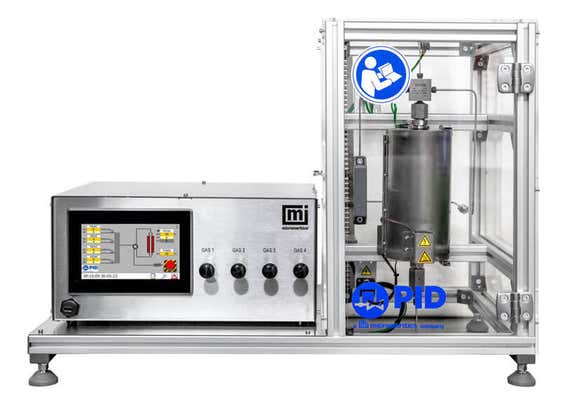
Through the utilization of pre-designed modular components, we significantly reduce two critical project factors:
- Construction time
- Cost
Additionally, we incorporate the latest advancements in process control technology to ensure optimal efficiency.
